Rhubarb Jam
Put a dollop of this rosy Rhubarb Jam on your morning toast, biscuit, or scones. Or add a swirl to your yogurt or ice cream. It is simple to make, requiring only fresh rhubarb, sugar, and lemon juice. I added vanilla paste; however, vanilla extract or scraped vanilla seeds would work as well. But, if you prefer, you could leave the vanilla out for just a pure rhubarb jam.
In all honesty, I was very late in joining the Rhubarb Appreciation Society. I can’t say why but for the first (mumble mumble) fifty years of my life, I associated rhubarb with the sickening sweet fluoride treatments my childhood dentist inflicted on me.
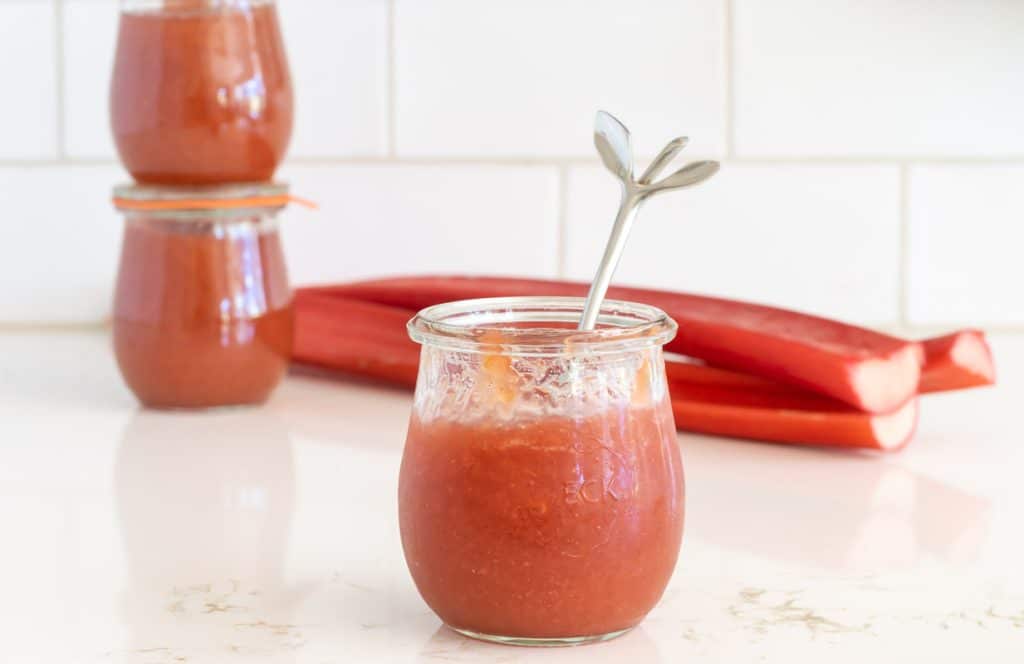
Table of Contents
But luckily, over the past several years, I was reintroduced to rhubarb and feel cheated out of years of enjoyment! So, I’m going to make up for those lost years! Last year I paired rhubarb with strawberries in this Strawberry Rhubarb Jam. Now you can add this simple Rhubarb Jam to your rhubarb repertoire.
ingredients in rhubarb jam
Talk about a simple small-batch jam recipe! This easy rhubarb has three ingredients, with an additional optional ingredient.
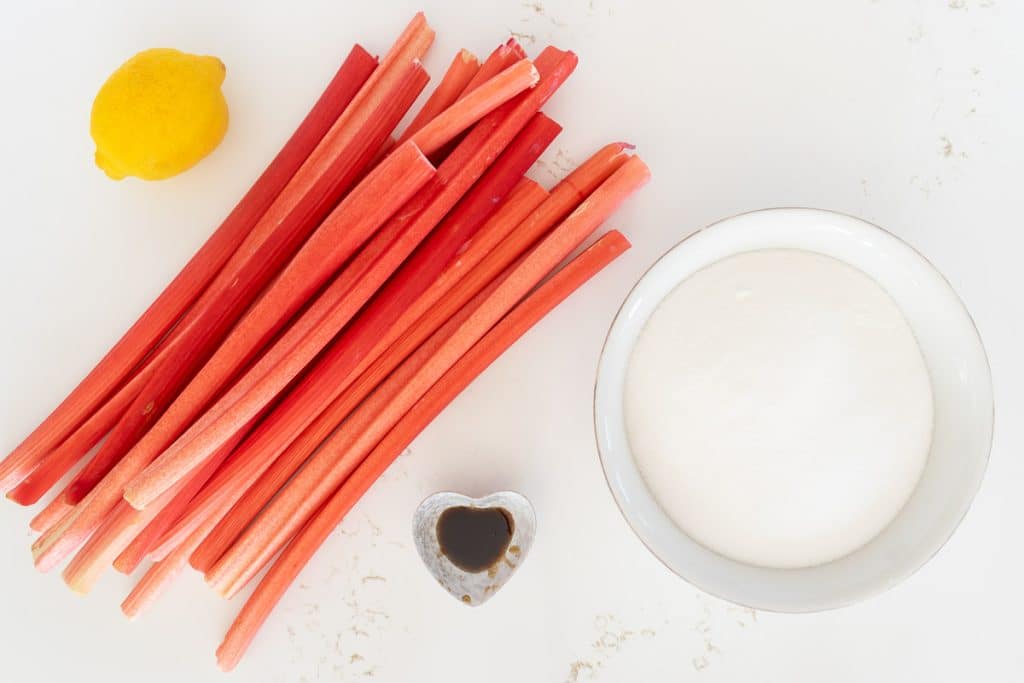
- Fresh, tart rhubarb is best for this recipe. I used my food processor to slice it very thin, which made for a less fibrous jam. If you only have frozen, then measure it before it is thawed. Place the frozen fruit with sugar in a bowl and let it thaw and macerate in the fridge at the same time.
- Sugar is needed to balance the tartness of the jam and is a part of the gelling process along with…
- Lemon Juice!
- Vanilla is an optional ingredient. I added vanilla bean paste to my jam, but you could substitute it with 2 TB vanilla extract or scraped seeds from 2 vanilla beans. You can see the little flecks of vanilla beans in this spoonful of rhubarb jam.
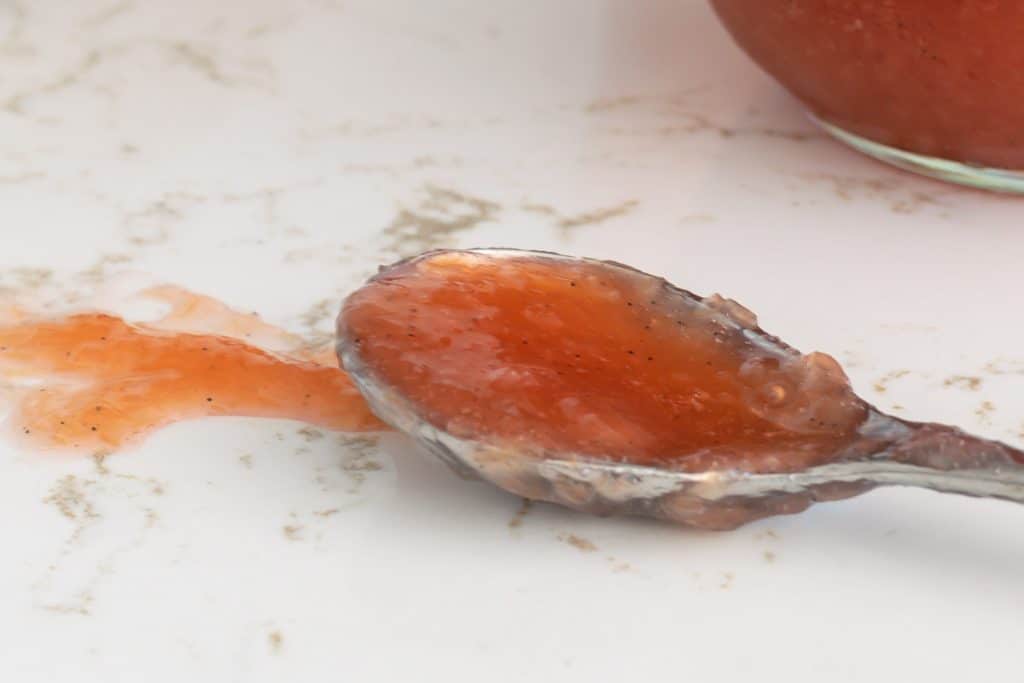
pectin or no pectin
Rhubarb is a low-pectin fruit, which means you’ll need to add pectin (either commercial or natural) or plan for a longer cook time to cook down the liquid and thicken the same. I usually opt for no-commercial pectin versions of preserves; it is just a personal preference.
Since I prefer to preserve without pectin, I’ll typically add a high-pectin fruit (apples or lemons) to my low-pectin fruit or plan to cook my jam a bit longer.
When not using pectin, it is helpful to use a wide bottom pan to increase the surface area of your jam. That increased surface area helps speed up the evaporation and gel of your preserves.
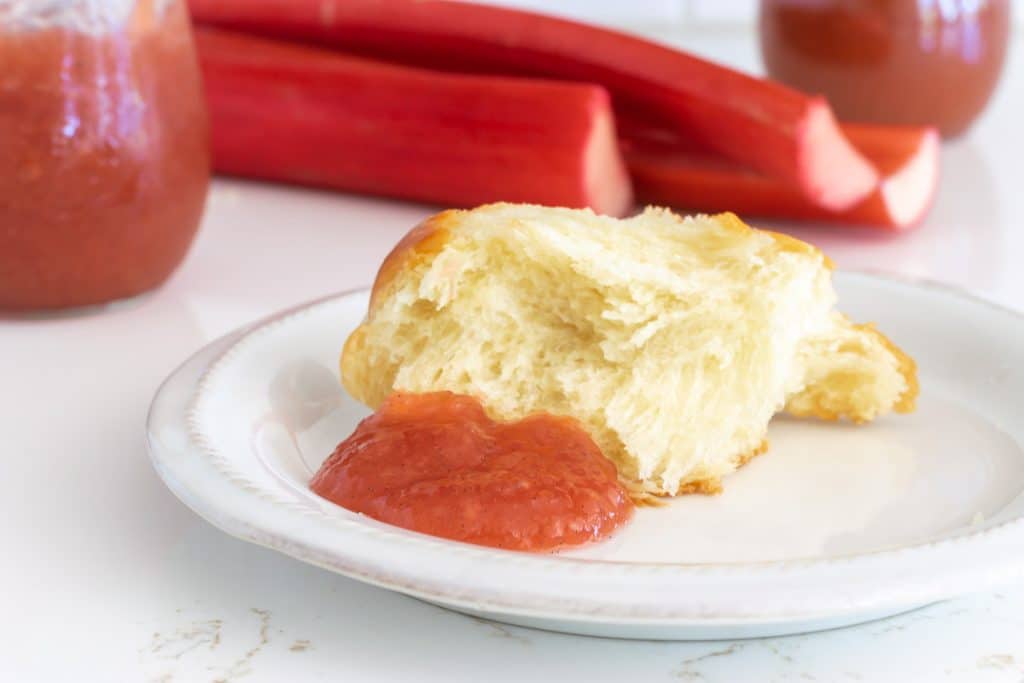
macerate your rhubarb
Maceration means to soften something by soaking it in a liquid. In this case, the liquid is produced by tossing fresh rhubarb with sugar, as sugar pulls liquids from fruit. At a minimum, macerate your fresh rhubarb for at least one hour. I have let my rhubarb for up to 48 hours when making this jam.
In effect, we are ‘precooking’ the rhubarb by macerating it. By the time we add the rhubarb to our jam pot, it is already soft, and the juices have already been released.
This jam recipe uses the power of maceration to reduce the cooking time of the rhubarb.
how to make rhubarb jam
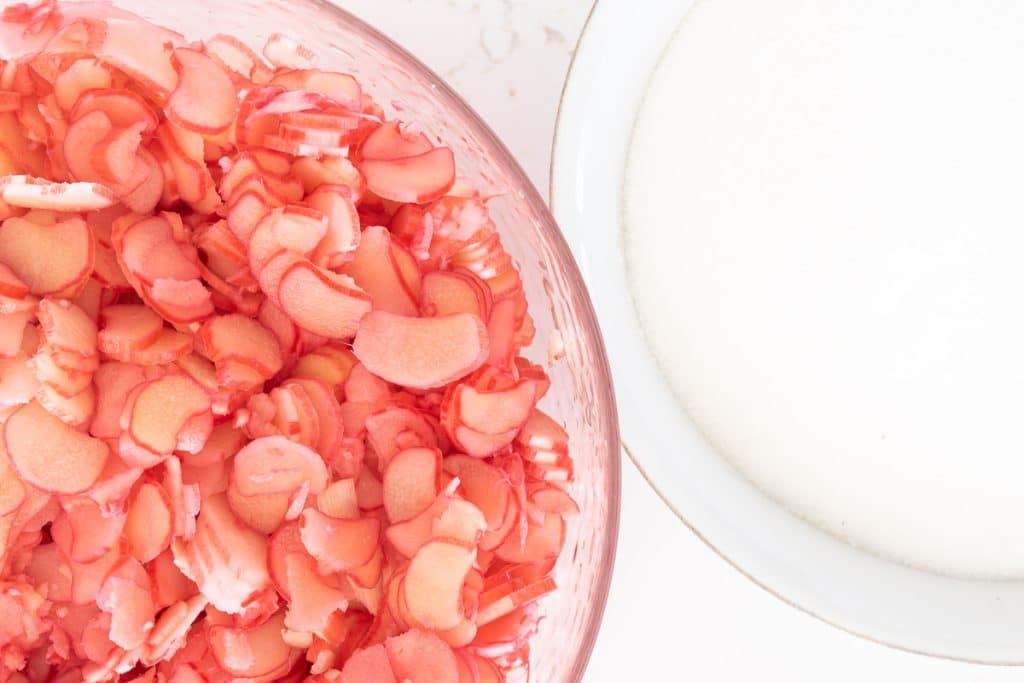
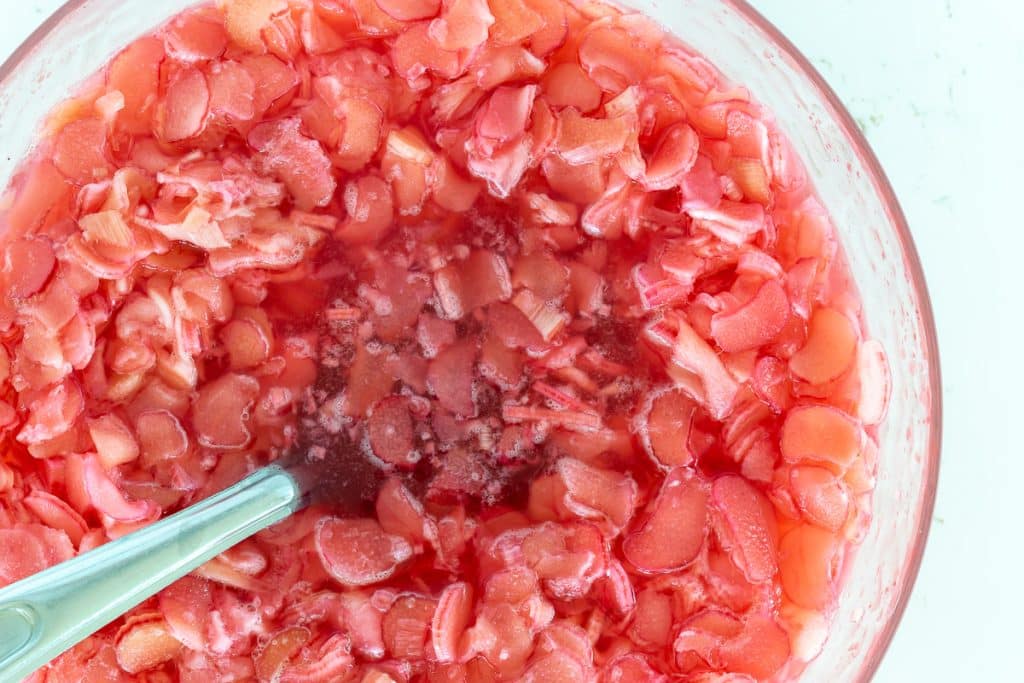
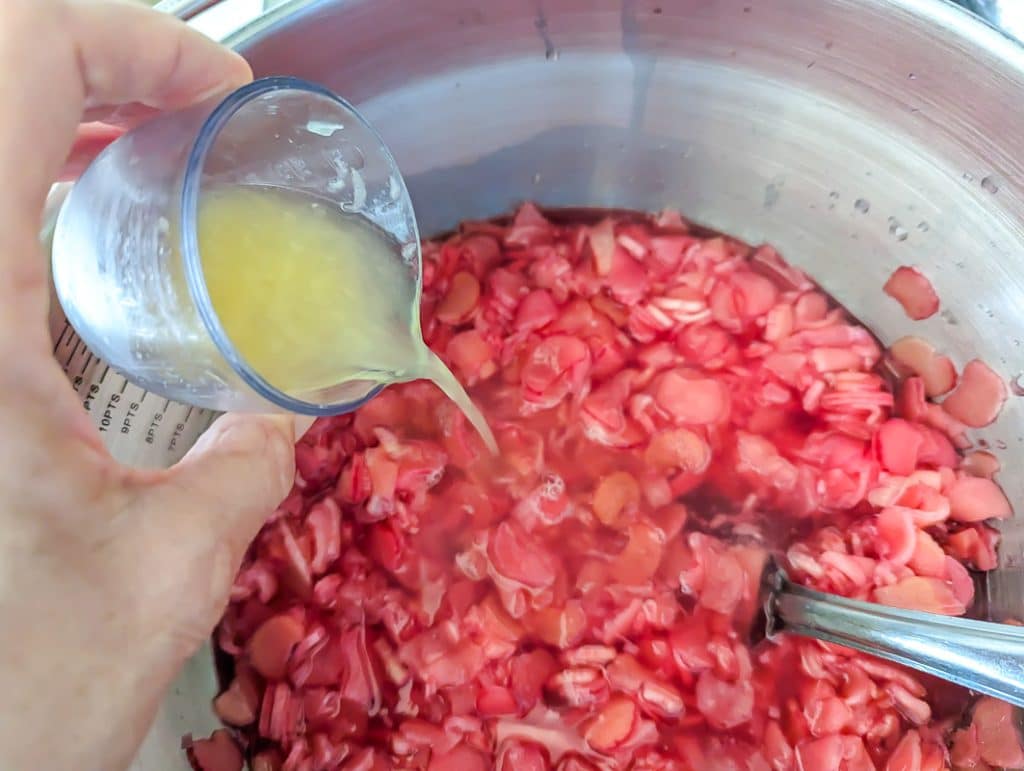
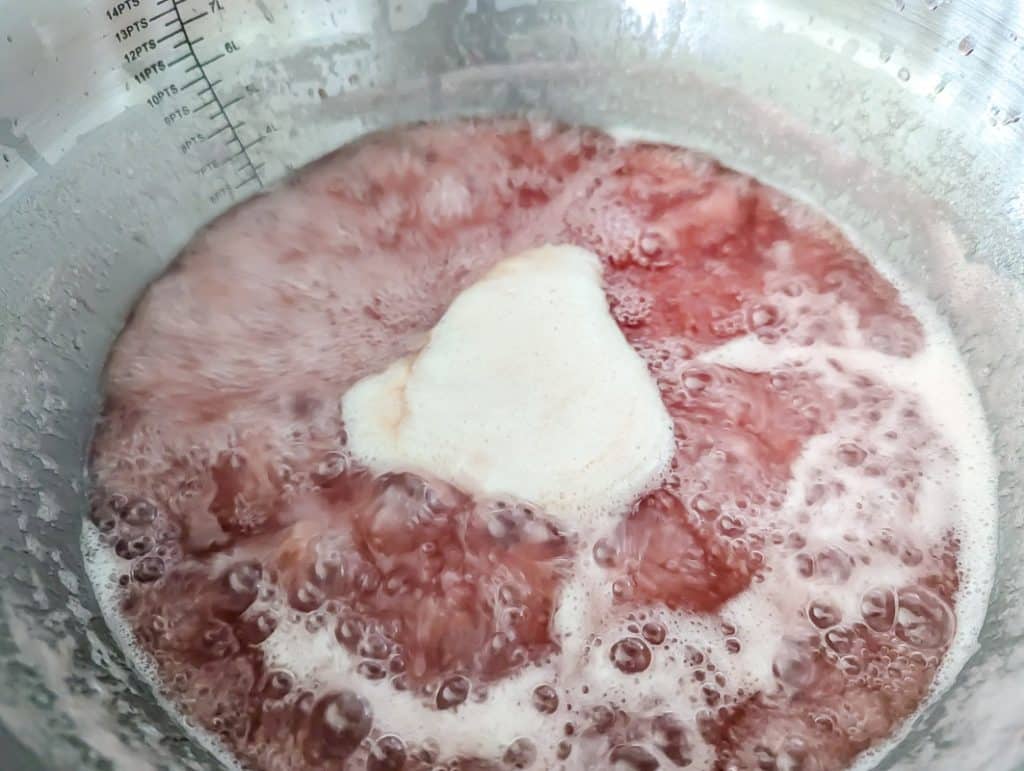
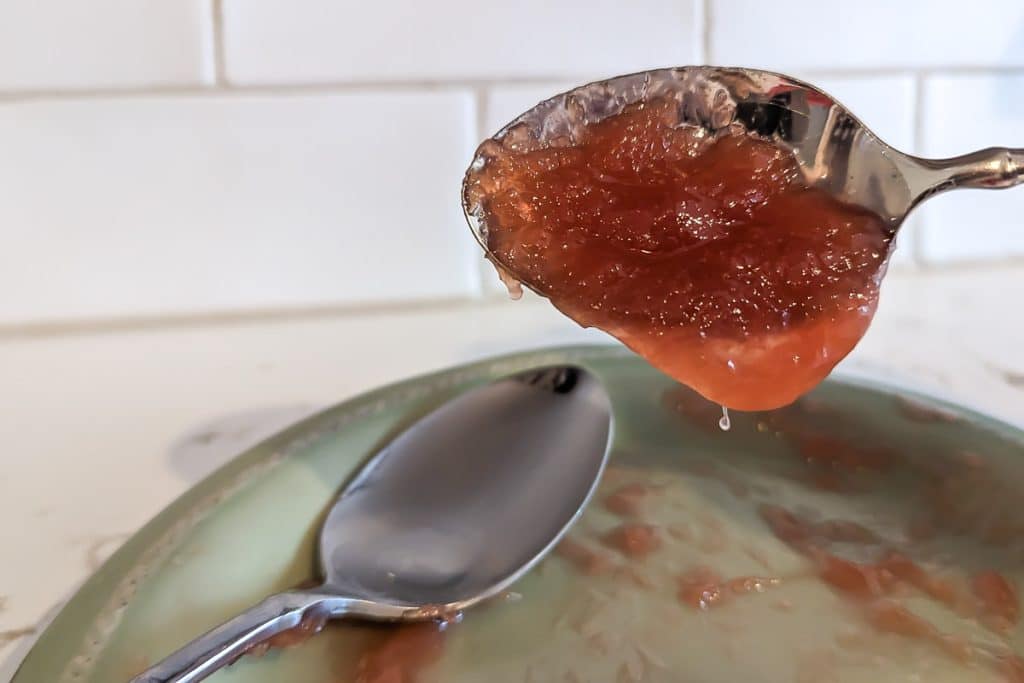
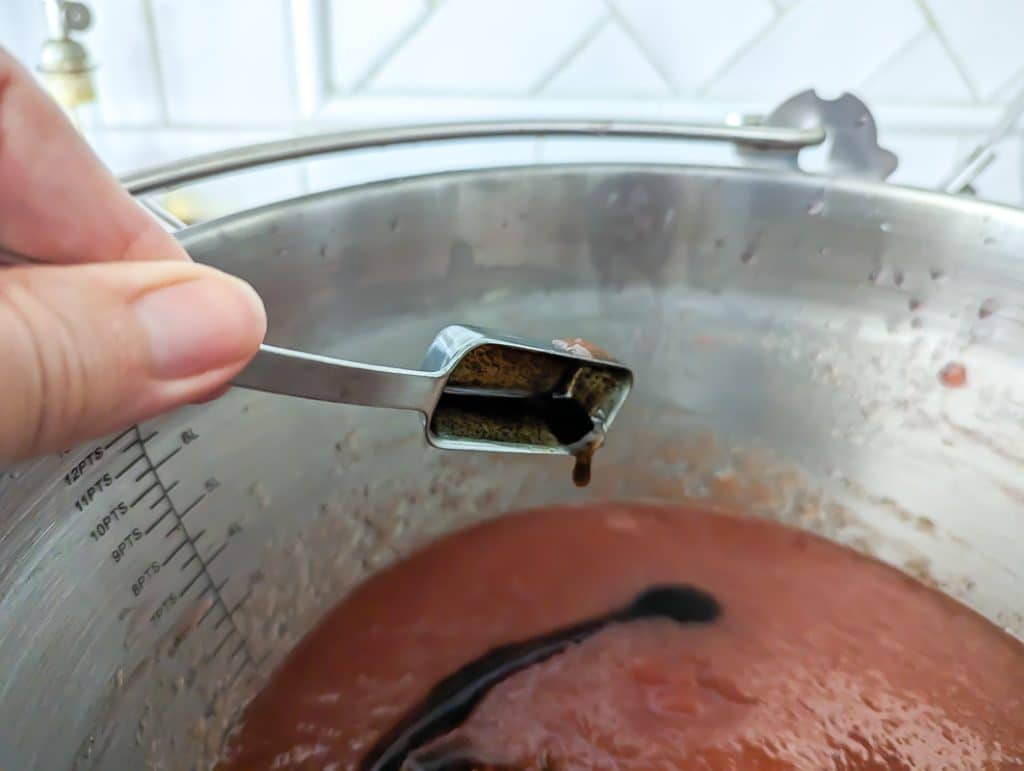
how to know if your jam is set?
It can be hard to tell if your pectin-free jam is set while it is still warm and in the pot. There are several methods that you can use to test for doneness before canning.
- Using a candy thermometer is the most reliable. Jams and jellies are done and ready to be canned when the temperature reaches 220ºF (104º – 105º C), which is 8ºF above the boiling point of water at sea level. If you are at a higher altitude, subtract 2º F for every 1000 feet above sea level. It is important to use your candy thermometer correctly. Make sure the tip of the thermometer is fully submerged in your jam or jelly, but keep it from touching the bottom of the pot. Hold the thermometer vertically and read it at eye level.
- Place several spoons on a plate in the freezer when you begin to make your jam. When you think your jam may be set, turn off the heat under your jam pan. Remove one of the spoons from the freezer and take a spoonful of jam. Set the spoon back in the freezer for 2-3 minutes until the back of the spoon is cool. Hold the spoon vertically. The jam is set if it ‘sheets’ off the spoon in one sheet instead of ‘dripping’ off the spoon in more than one drop.
- Place a plate in the freezer when you begin to make your jam. Turn off the heat under your jam pan when you think your jam may be set. Remove the plate from the freezer and put a small dollop of jam on the plate. Return it to the freezer for 2-3 minutes. Remove the plate from the freezer and run your finger through the jam. It is done if the trail your finger made is not immediately filled with jam. Additionally, look for the jam to ‘wrinkle.’
how to can rhubarb jam, illustrated
Written out instructions are included in the recipe card, but here is a visual to go along with the written.
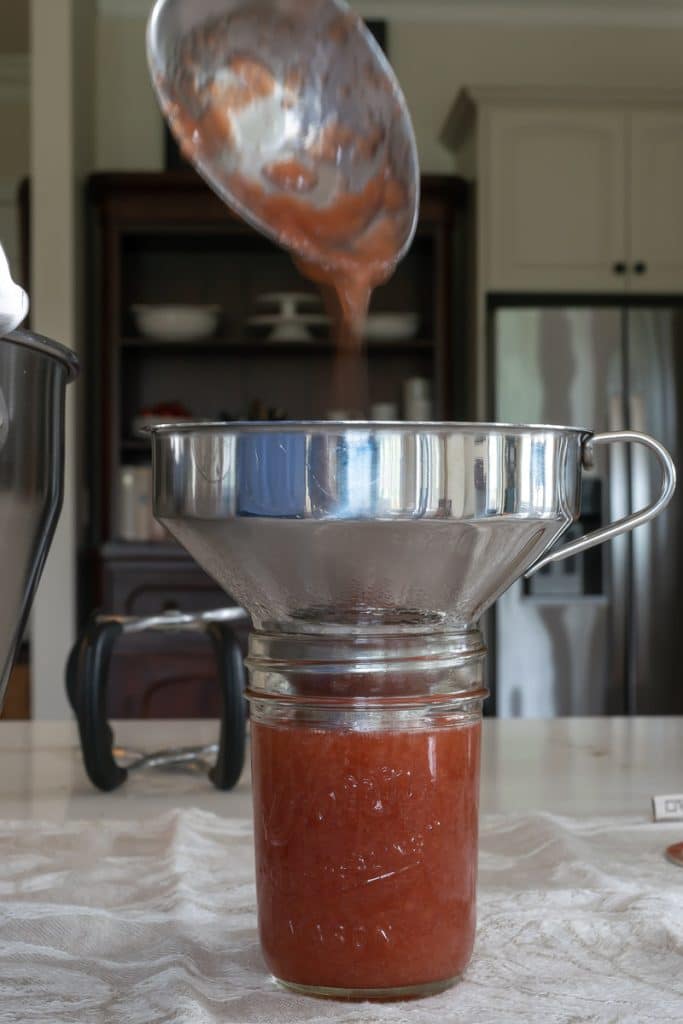
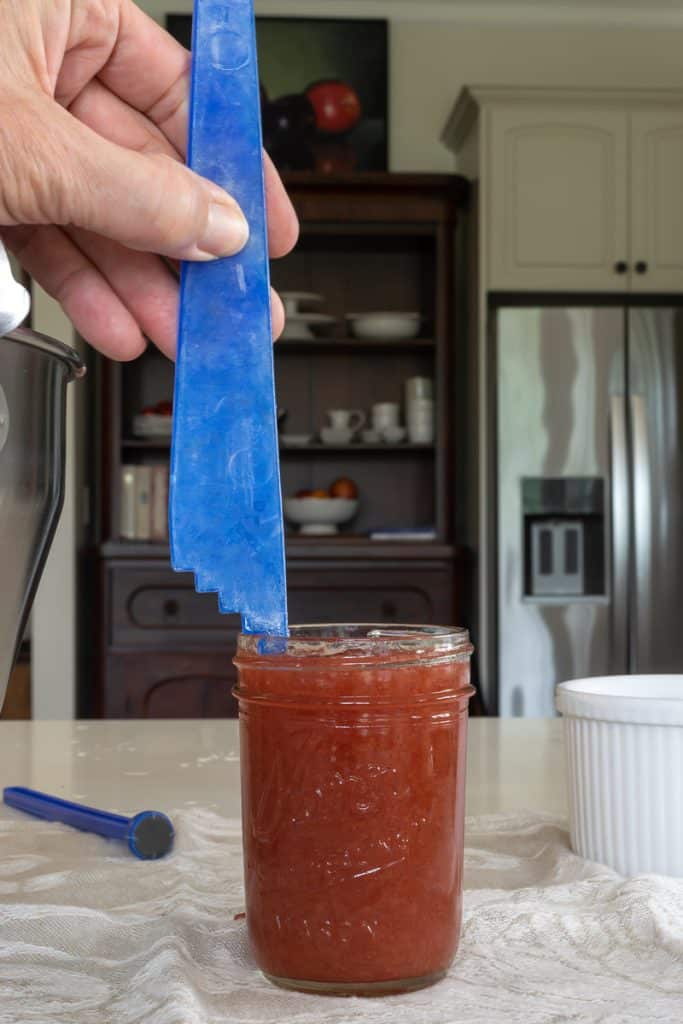
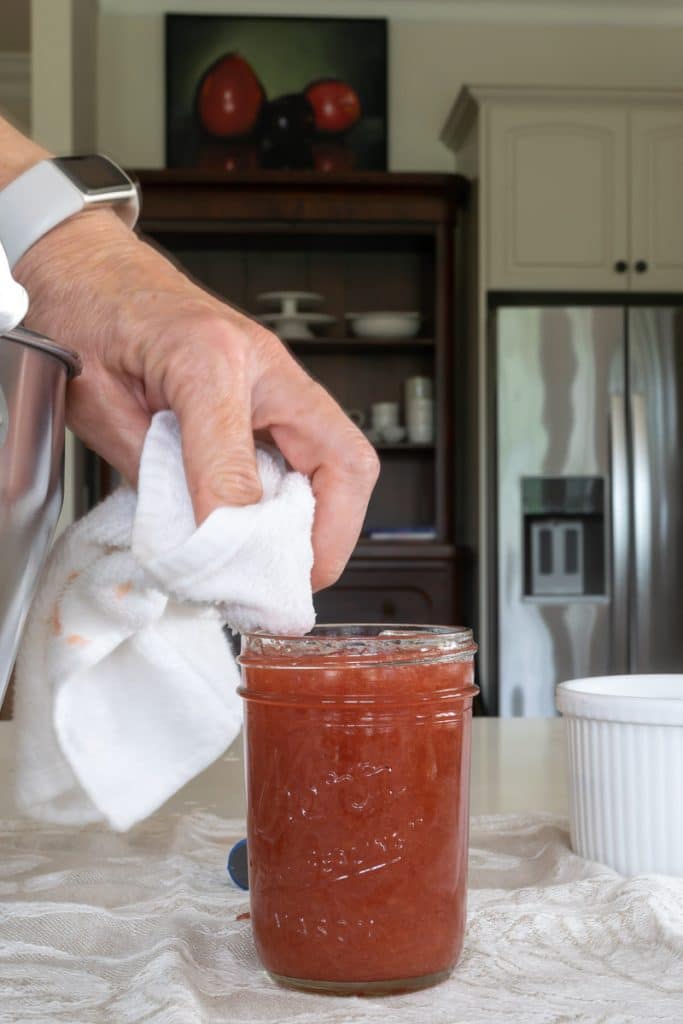
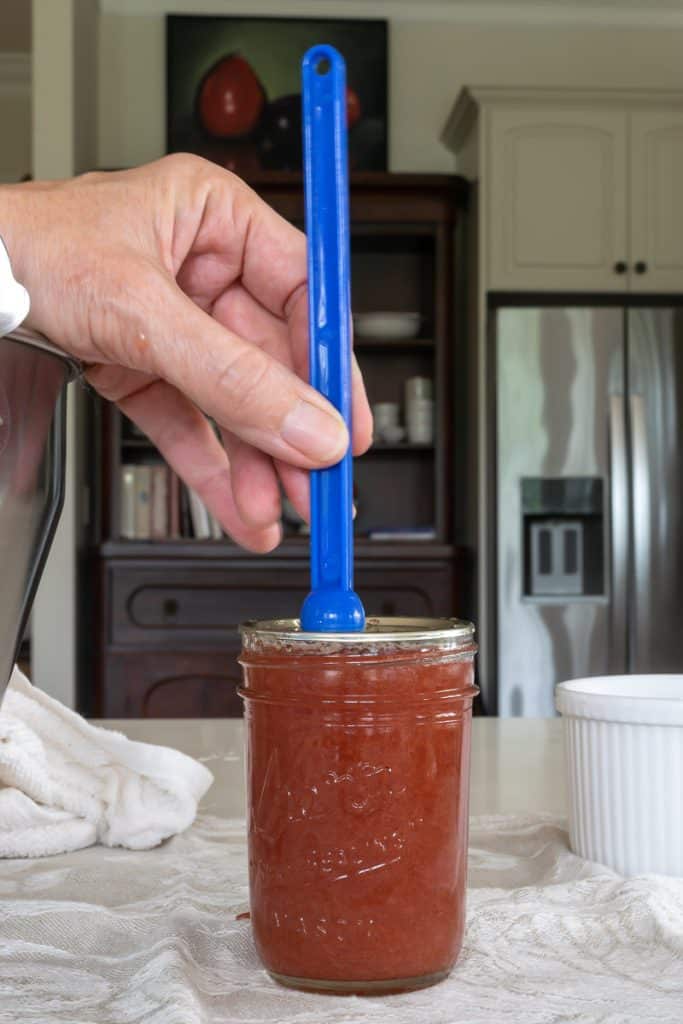
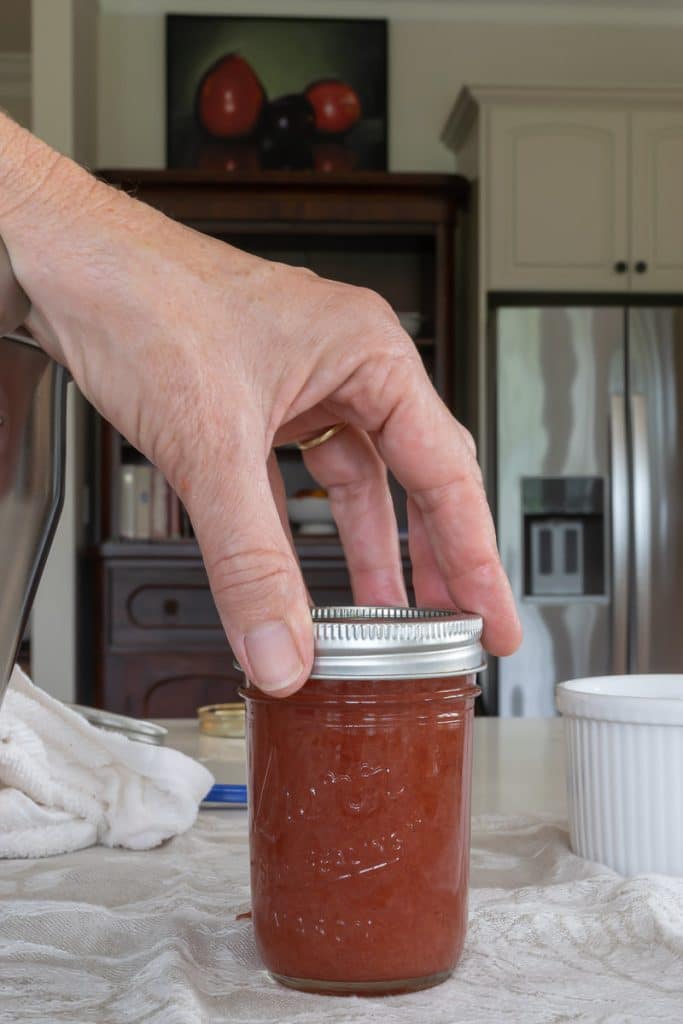
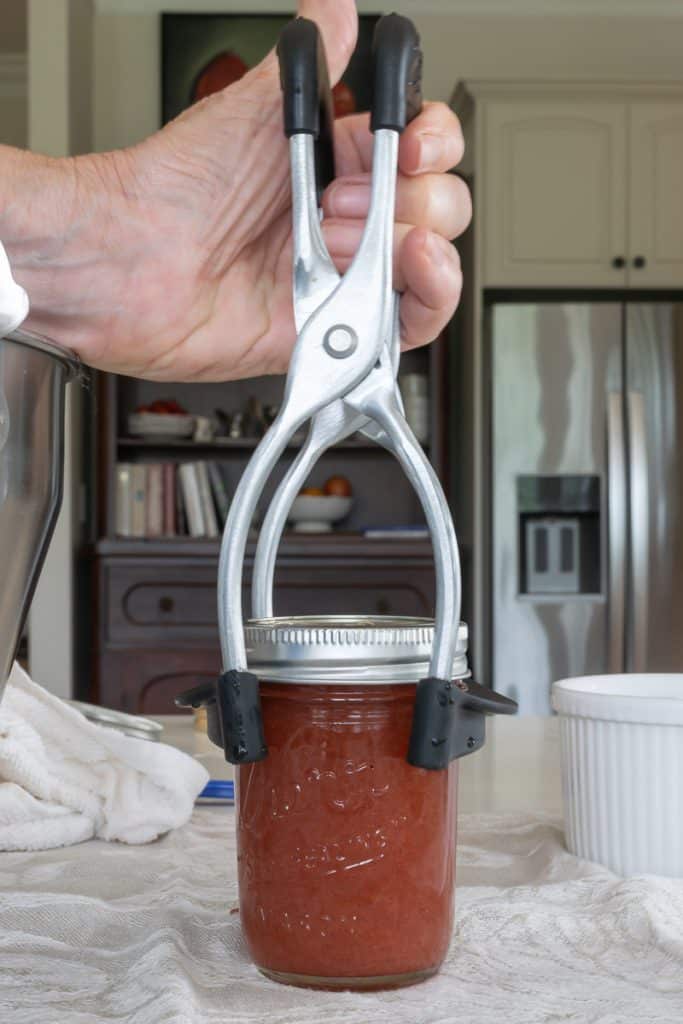
supplies I use for canning this rhubarb jam
Some of these links may be Amazon affiliate links and I may earn a small commission from the sale of these products to help defray the costs of operating this site, but the price you are charged is not affected. You can see my full disclosure policy here.
While boiling water canning isn’t hard, it does require a few pieces of equipment to make the task much easier:
- A Jam Pan or Maslin Pan
- Jar Lifter
- Magnetic Canning Lid Lifter
- Headspace Gauge
- Ball Jars or Kerr Jars or another suitable canning jar.
- A Wide-Mouth Funnel
- The Ball Complete Book of Home Preserving or The All New Ball Book Of Canning And Preserving.
- A clean surface
- Clean towels
- A large spoon or measuring cup to scoop the jam or preserves into each jar.
- A bowl of white vinegar and a clean dishcloth or paper towels.
The Ball Complete Book of Home Preserving is my bible. Even if I think I could make the recipe in my sleep, I double-check myself against the Ball Book…that whole botulism thing. It should be your first purchase if you are new to canning. My cookbook library inventory recently expanded with the addition of The All New Ball Book Of Canning And Preserving: Over 350 of the Best Canned, Jammed, Pickled, and Preserved Recipes! Another great canning and preserving resource is the National Center for Home Food Preservation at the University of Georgia website.
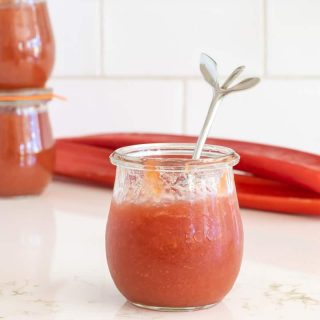
Rhubarb Jam
Equipment
Ingredients
- 4 pounds of trimmed fresh rhubarb stalks, washed
- 2 3/4 pounds of white sugar
- 3 ounces fresh lemon juice 1 large or 2 small lemons
- 2 -3 tablespoons vanilla paste vanilla extract or the seeds from 2-3 vanilla bean pods
Instructions
- If you will be canning the jam, Prepare a canner, jars, and lids. Wash your jars and lids. Sterilize your jars in a large pot filled with water. Bring the water to almost a simmer over medium heat. Keep the jars in the simmering water over low heat until you are ready to fill them. Use a jar lifter to remove them from the water when you are ready to fill them, dumping the hot water back into the pot when you remove each jar from the water. Right before you are ready to can, put your lids in a small pot or bowl with hot, but not boiling, water. Put some additional white vinegar in a small bowl alongside a clean washcloth or paper towel. Keep the water in your canning pot at a simmer while you fill your jars. See The The All New Ball Book of Canning and Preserving for additional guidance.
- Place a saucer in your freezer with several spoons if you don't have a candy thermometer to test that your jam is set.
- Slice the rhubarb into 1/8 – 1/4 inch slices. I used the slicing blade of my food processor.
- Combine sliced rhubarb with sugar in a large glass or hard plastic bowl and let it macerate, covered, in the refrigerator for at least one hour and up to 48 hours. Letting it macerate longer will reduce the cooking time, resulting in a fresher jam.
- Transfer the rhubarb and all the juices to a large, wide pot or preserving pan.
- Add the lemon juice and bring the mixture to a boil over high heat, stirring occasionally.
- Reduce heat to medium-high to achieve a gentle, rolling boil. Reduce the heat to keep the jam from sputtering and splattering out of the pot.
- Stir frequently and reduce the heat if the jam sticks to the bottom of the pan.
- Cook until thickened and no longer watery, about 20 minutes. Toward the end of the 20 minutes, you will most likely need to stir constantly to prevent the jam from sticking to the bottom of the pot.
Test For Doneness
- Using a candy thermometer is the most reliable. Jams and jellies are done and ready to be canned when the temperature reaches 220ºF (104º – 105º C), which is 8ºF above the boiling point of water at sea level. If you are at a higher altitude, subtract 2º F for every 1000 feet above sea level. It is important to use your candy thermometer correctly. Make sure the tip of the thermometer is fully submerged in your jam or jelly, but keep it from touching the bottom of the pot. Hold the thermometer vertically and read it at eye level.
- Frozen Spoon Method. When you think your jam may be set, turn off the heat under your jam pan. Remove one of the spoons from the freezer and take a spoonful of jam. Set the spoon back in the freezer for 2-3 minutes until the back of the spoon is cool. Hold the spoon vertically. The jam is set if it 'sheets' off the spoon in one sheet instead of 'dripping' off the spoon in more than one drop.
- Frozen Plate Method. Turn off the heat under your jam pan when you think your jam may be set. Remove the plate from the freezer and put a small dollop of jam on the plate. Return it to the freezer for 2-3 minutes. Remove the plate from the freezer and run your finger through the jam. It is done if the trail your finger made is not immediately filled with jam. Additionally, look for the jam to 'wrinkle.'
- If the gel stage has been reached, skim off any foam.
- If the jam still needs to cook a bit more, turn the heat back on for 5 minutes before testing again.
- Once the jam is done, stir in vanilla if using.
To Water Bath Process
- Spoon your jam into hot sterilized jars, leaving 1/4 inch headspace.
- Remove air bubbles and wipe the rim.
- Center lid on the jar
- Screw band down until resistance is met, then increase to fingertip tight.
- Place jars in a canner, making sure there is at least 1" of water over the cans.
- Cover the pot and bring to a boil
- Boil for 10 minutes
- Turn the heat off, remove the lid, and let sit for 5 minutes
- Carefully remove jars with a jar lifter and place them on a rack where they can be undisturbed for 24 hours.
- Refrigerate any jars whose lids don't pop down.
Nutrition
Bookmark this page or pin the following image to refer back to this Rhubarb Jam Recipe in the future.
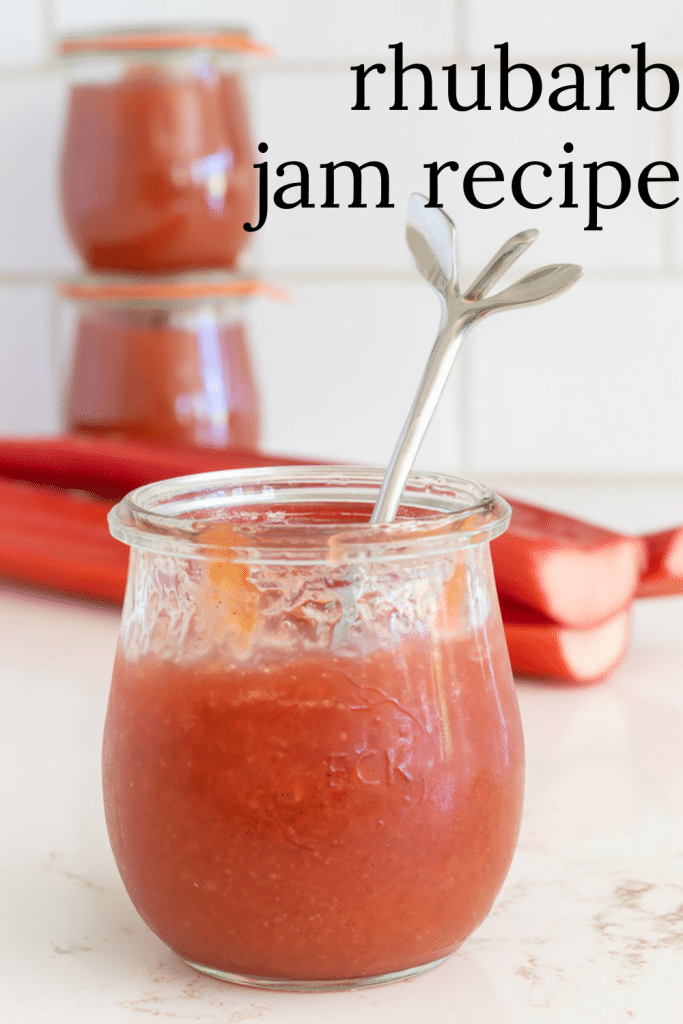
Thanks so much for spending a few minutes of your busy day with me!
To ensure you don’t miss future content, pop your email in the pale green box on the right or click here. I usually send one email weekly, so I won’t inundate your inbox. I’m sensitive to an overflowing email inbox!
We will only use your email address to send you emails, no more than 1-2 weekly. In addition, you will have access to my growing library of knit & crochet patterns and other printables. Check back often as this library will continue to grow. You can unsubscribe anytime by emailing me or clicking on the “unsubscribe” link at the bottom of all emails.
And you can access many of the products I refer to on my Nourish and Nestle Amazon Page. You can access it here.
So, if you’d like to participate in the ‘subscriber benefit’ action, simply subscribe to Nourish and Nestle here or use the form on the right sidebar. It’s slightly towards the top.
I have sent all my subscribers the link to the Subscriber Benefits Library. If you missed it or misplaced it, let me know.
Until next time…


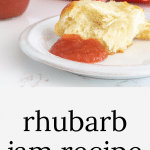
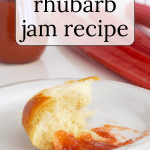
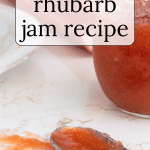
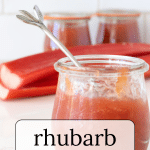
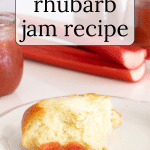
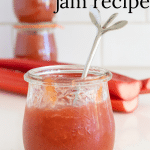
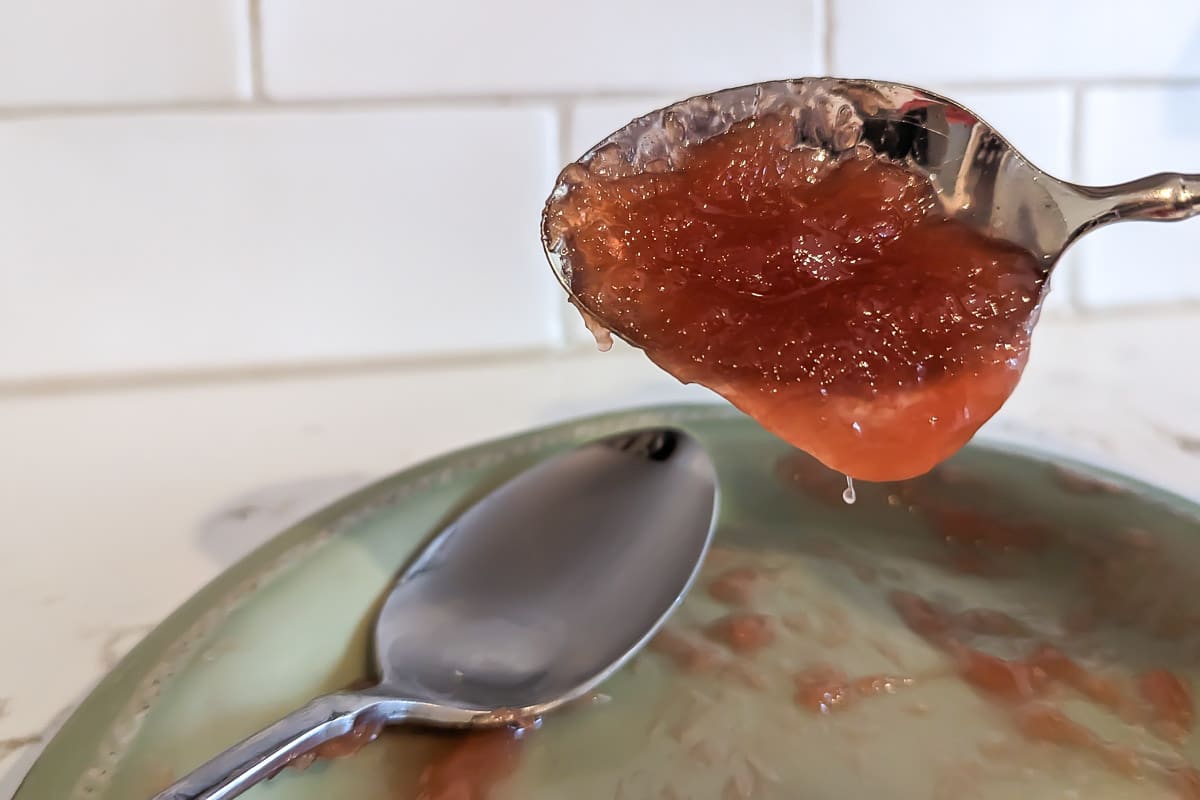
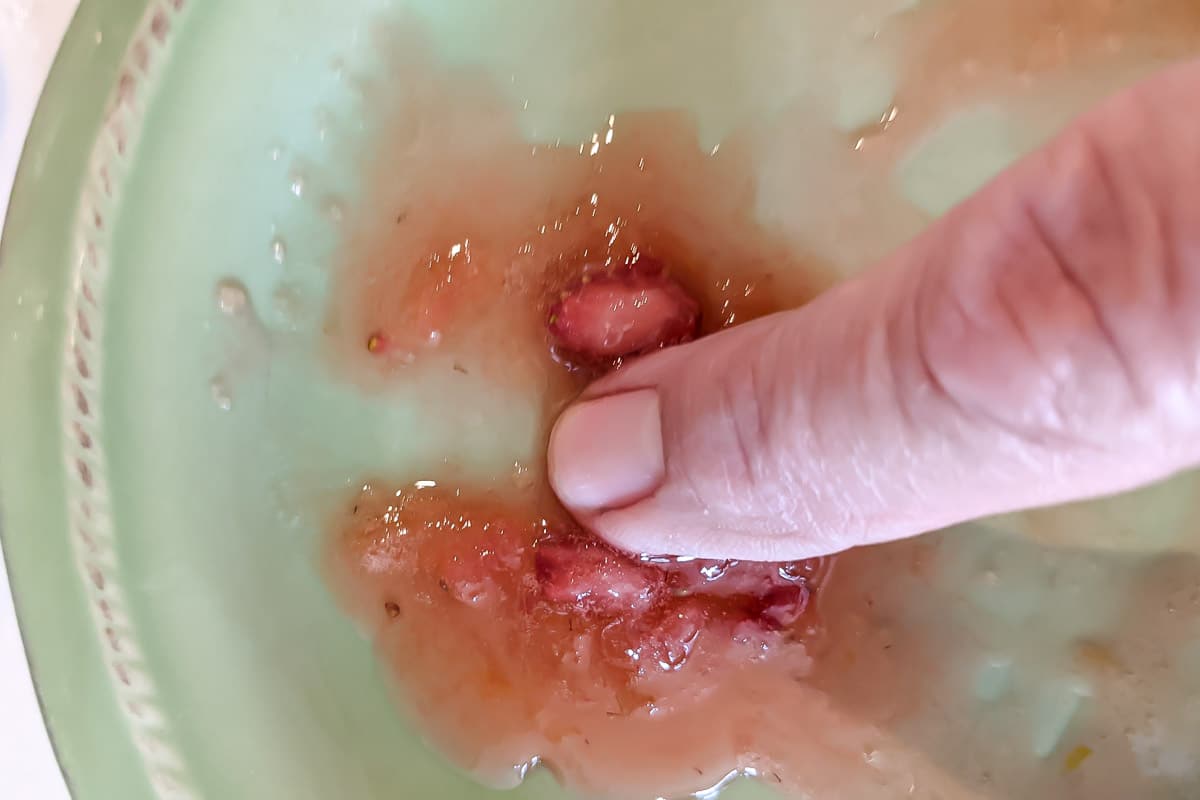
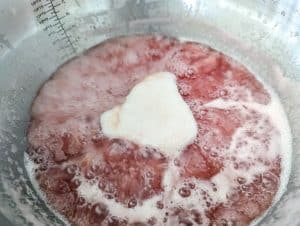
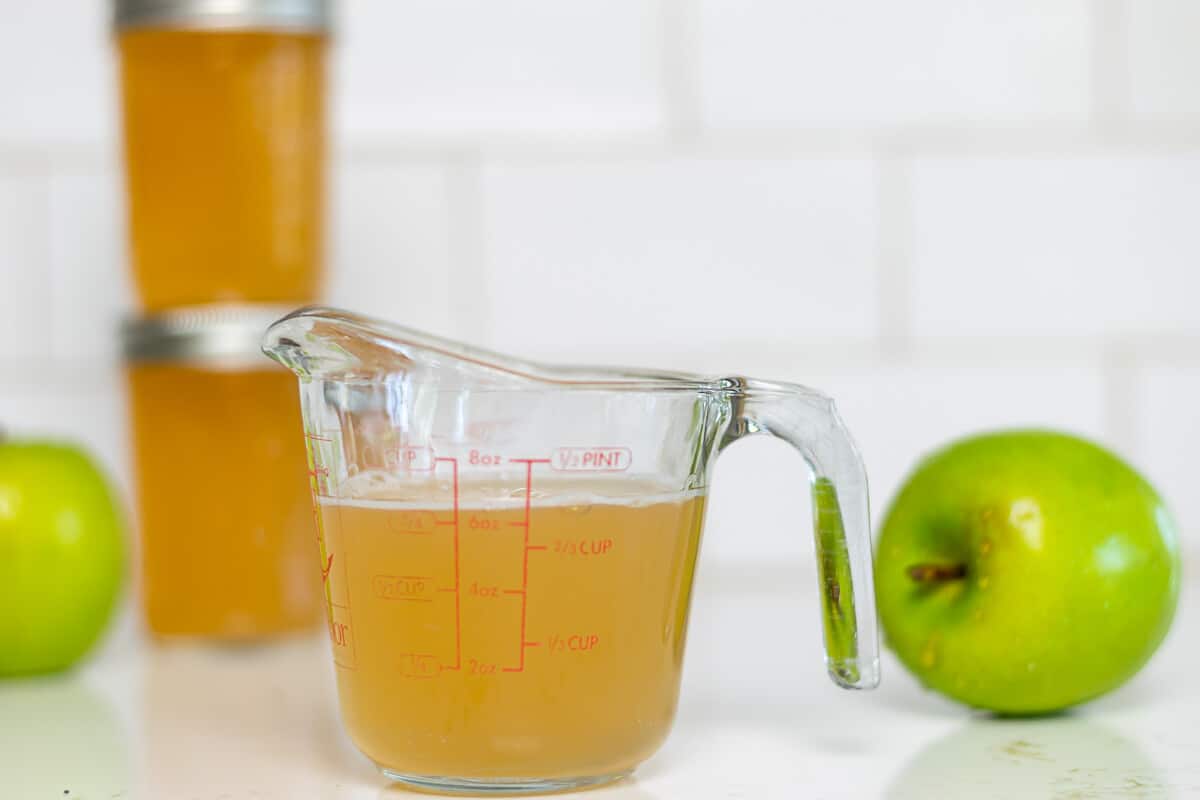
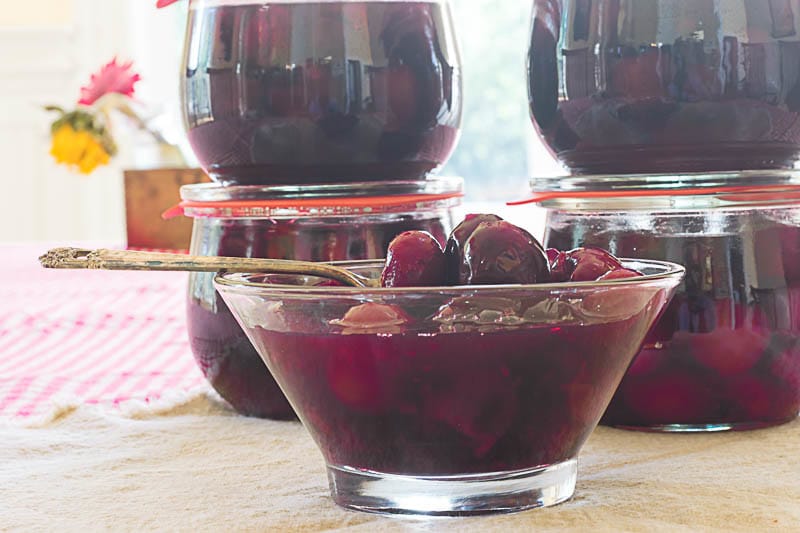
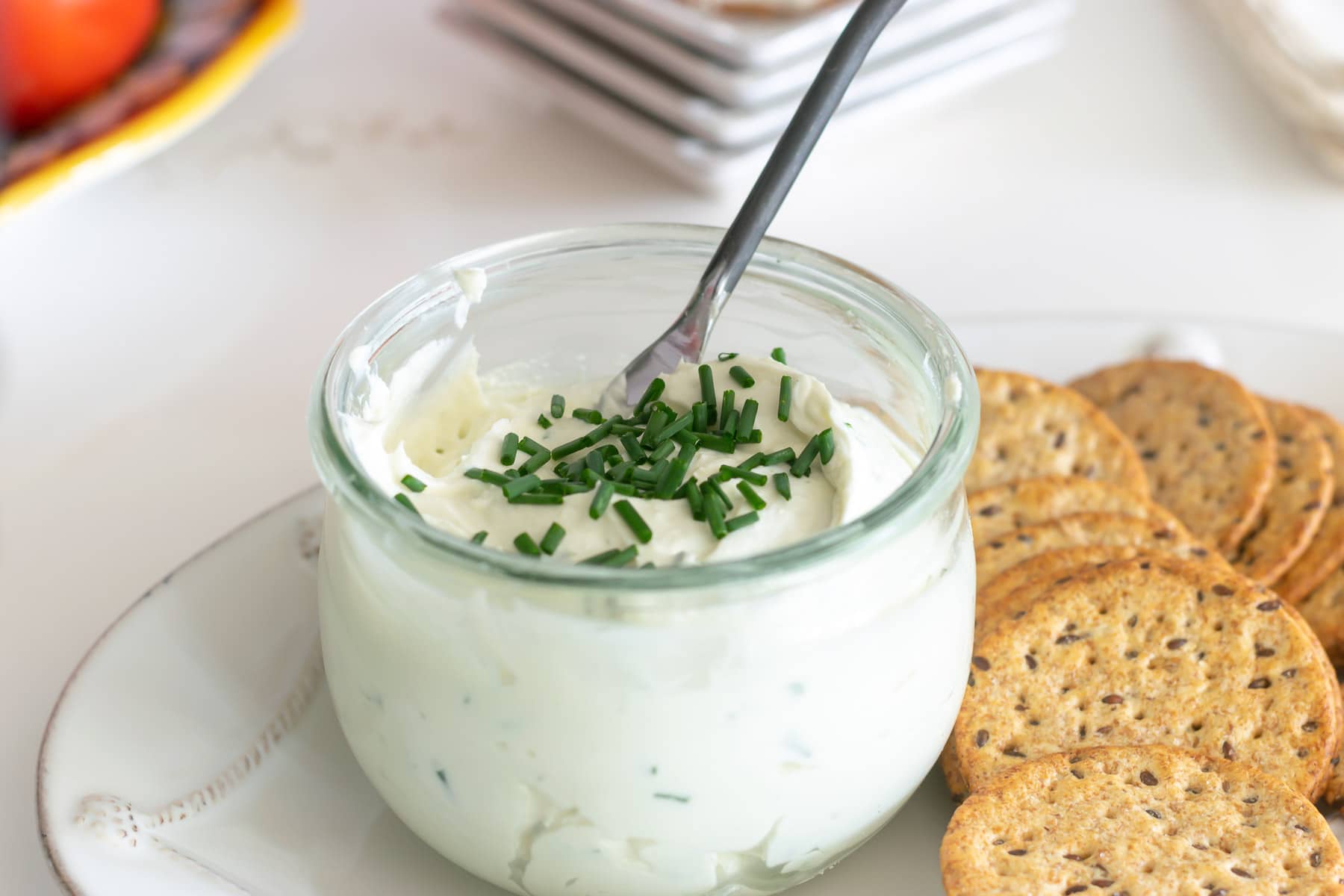
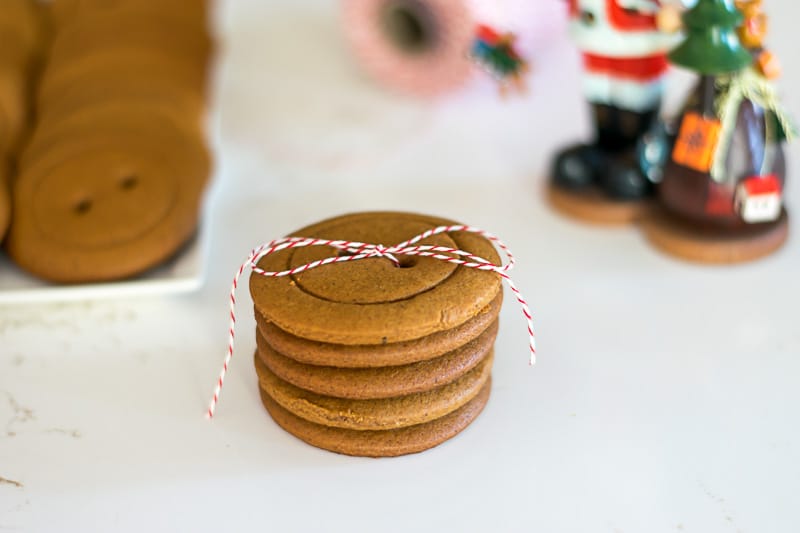
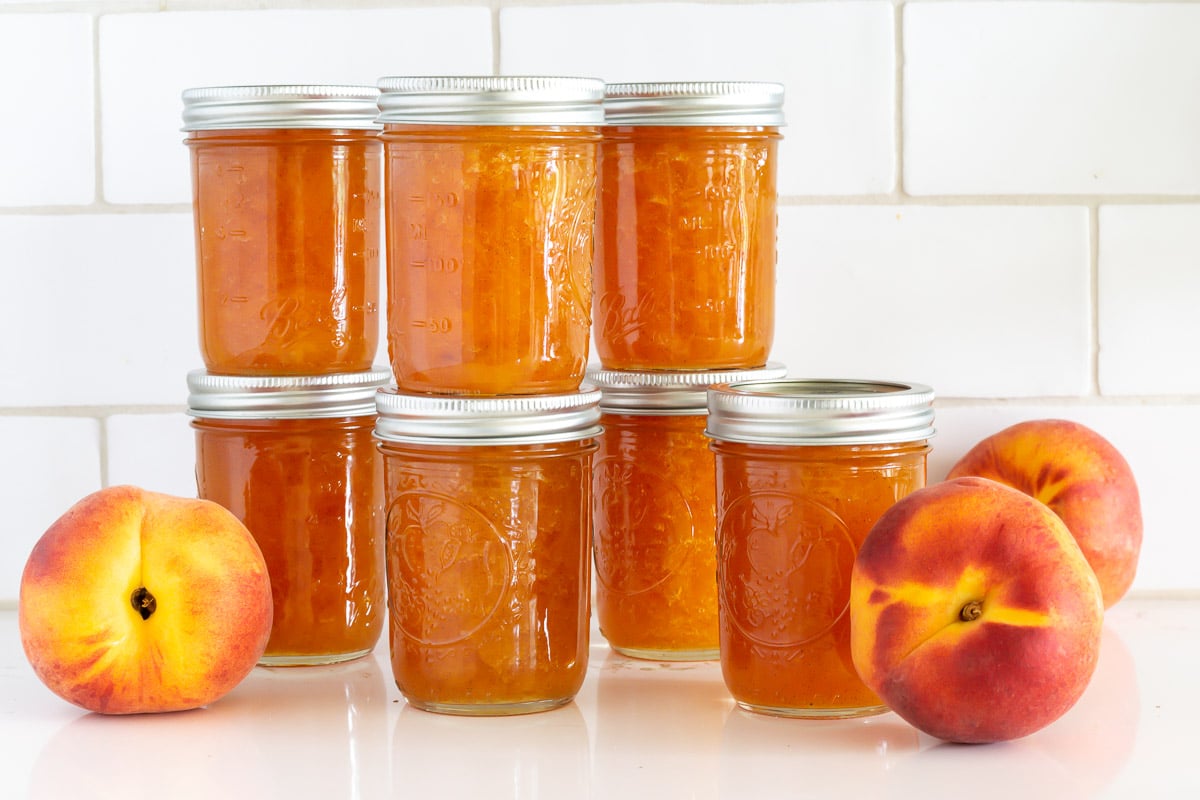
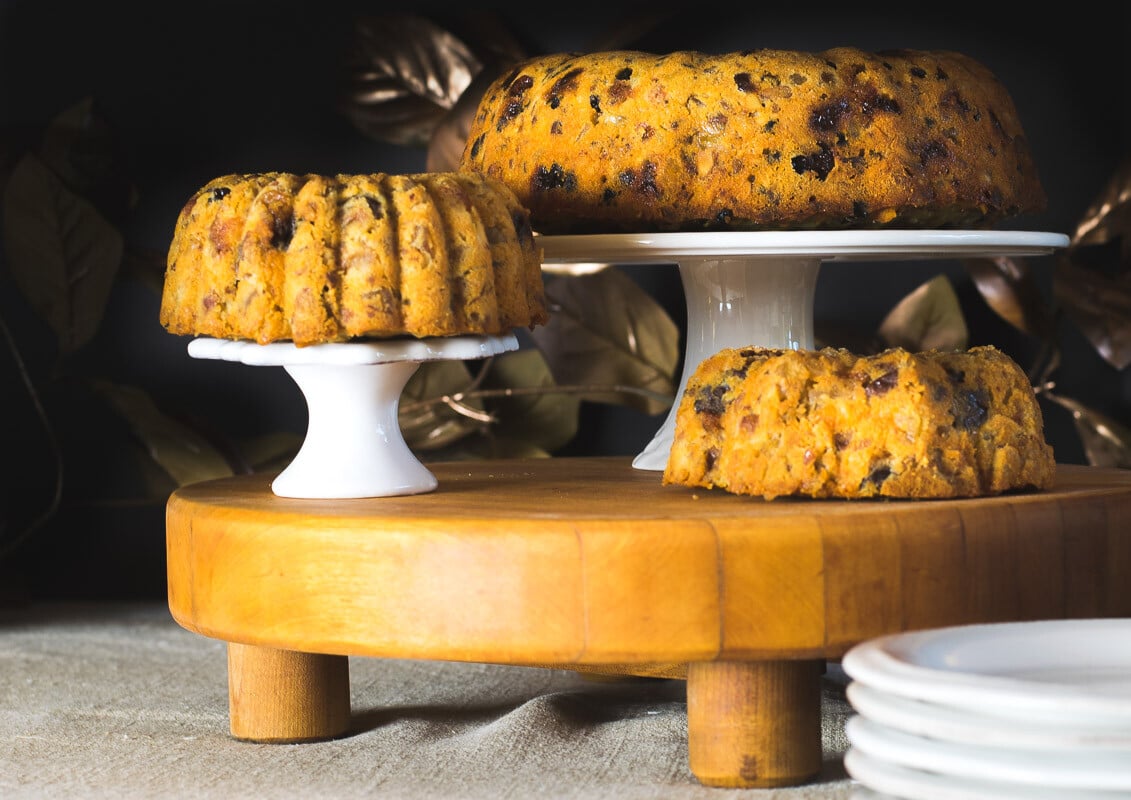
Do you add strawberries for non commercial pectin? If yes what ratio of strawberries to rhubarb? Still add lemon juice?
Hi Mary,
I did not add anything for the pectin, I just cooked it down more.
Can I use frozen rhubarb for Jam?
Hi shelly,
I think it will be fine, especially since you’ll be macerating it. You’ll use the same amount, just add the frozen rhubarb to a bowl with the sugar and let it thaw and macerate at the same time!